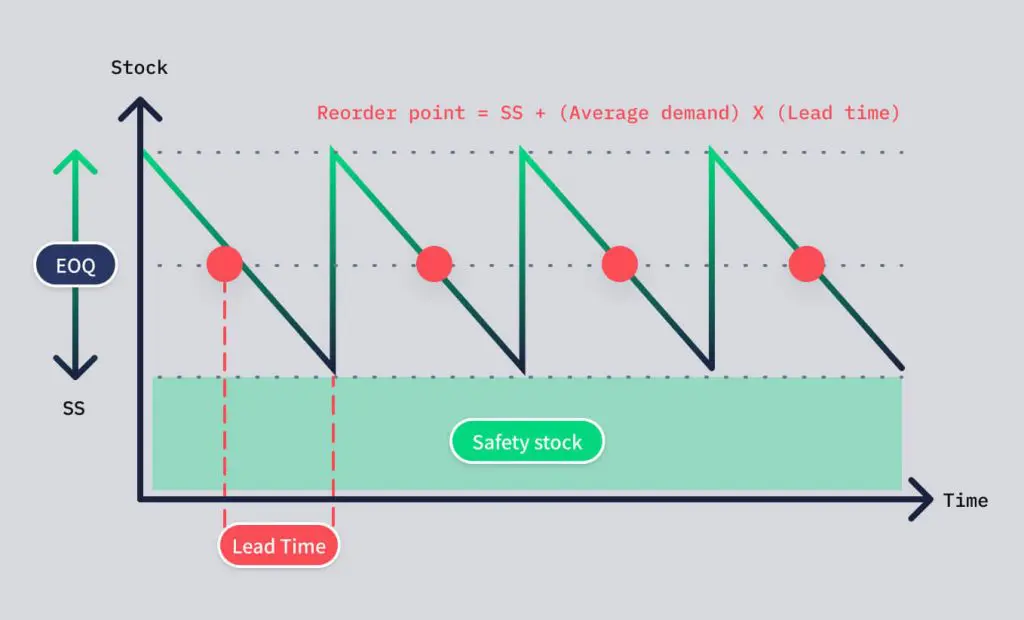The current business environment is highly competitive, optimizing supply chain performance is a determining factor for organizational success. Intrinsic to supply chain performance is the flow of goods, services, and information from origin to consumption to ensure efficiency, cost-effectiveness, and customer satisfaction. Through the employment of various metrics and improvement strategies, businesses can analyze their supply chain operations and find areas for improvement. In this article, we will take a thorough look at the importance of supply chain performance optimization, exploring different metrics and strategies that can be used to achieve operational excellence and stay ahead of the competition in the market.
What is Supply Chain Performance?
Supply chain performance refers to the overall efficacy of the processes of transporting goods and services from suppliers to customers. It encompasses inventory management, order fulfillment, transportation management, and distribution. These elements are interconnected and their synchronicity is a prerequisite for an efficient supply chain. Inventory management involves keeping the right amount of stock to meet demand without having too much. Order fulfillment ensures products are delivered to customers accurately and on time. Transportation management optimizes how goods are moved between locations, considering factors like transportation mode and routes. Distribution involves strategically placing products to make delivery to customers easier. By weaving these elements seamlessly, businesses can have a flexible and efficient supply chain that can adapt to market changes and meet customer needs
Why is Supply Chain Performance Important?
Improving supply chain performance is essential for businesses as it has a significant impact on their immediate and future objectives, lowers expenses, and enhances overall financial outcomes.
Affects Both Short-Term and Long-Term Goals
Effective supply chain management endorses the materialization of both short-term operational objectives and long-term strategic goals. In the short term, optimized supply chains equips businesses to respond swiftly to market changes, meet customer demand, and maintain a competitive edge. Let’s consider a well-designed supply chain. It can assist companies in capitalizing on the advantages of sudden increases in demand or adapting to disruptions, ensuring continuous operations and customer satisfaction. In the long term, a high-performing supply chain supports sustainable growth and business expansion by reducing inefficiencies and maximizing resource utilization. This allows companies to reinvest their savings into research and development, market expansion, and other growth initiatives, leading to long-term success.
Read more on how Intuendi can bridge the gap between short-term replenishment and mid to long-term planning in our free eBook:
Helps in Reducing Operating Costs
Supply chain optimization enhances processes and coordination among supply chain entities to reduce costs related to procurement, manufacturing, and logistics. This can be achieved by minimizing waste, eliminating redundancies, and improving efficiency. For example, managing inventory levels effectively can lower carrying costs, while efficient transportation management can reduce freight expenses. Strategic supplier selection and negotiations can also lead to cost savings through economies of scale and better pricing. A study by Deloitte found that companies that optimized their supply chains saw an average cost reduction of 15-20%.
Improves Financial Performance
Optimizing supply chains not only improves operational efficiency and reduces costs, but also has a direct impact on a company’s financial performance and shareholder value. By reducing waste, increasing productivity, and improving customer satisfaction, businesses can enhance their profitability and return on investment (ROI). Additionally, efficient supply chains contribute to higher earnings before interest and tax (EBIT), a key measure of operational profitability. Research by McKinsey & Company shows that companies with top-tier supply chain capabilities consistently outperform their competitors, with an average 7.8% higher EBIT margin.
Key Concepts in Measuring Supply Chain Performance
In order to improve supply chain performance, businesses need to have an acute understanding of the important concepts and methodologies used to measure and evaluate different aspects of their operations.
Role of Performance Metrics
Performance metrics are vitally important in supply chain management as they provide measurable indicators of operational efficiency, effectiveness, and value creation. These metrics can be divided into three categories: efficiency, effectiveness, and value. Efficiency metrics focus on resource productivity and utilization, such as inventory turnover and transportation costs. Effectiveness metrics assess the supply chain’s ability to meet customer needs, while value metrics measure the financial and strategic impact of operations, for example, average inventory levels. By monitoring and analyzing these metrics, businesses can identify and address bottlenecks and inefficiencies in their supply chains.
Impact on Business Outcomes
Supply chain performance metrics have a direct impact on important business outcomes and decision-making processes. For example, metrics related to customer service levels can influence customer satisfaction and retention rates, which in turn affect revenue and market share. Cost metrics, like inventory carrying costs and transportation expenses, are crucial in determining profitability and operational efficiency. Alignment between supply chain performance metrics with overall business goals and strategies, enables companies to make informed decisions that boost their competitive advantage and market position. Regular monitoring and optimization of these metrics allow businesses to respond quickly to market changes and take advantage of new opportunities.
Common Metrics for Measuring Supply Chain Performance
Businesses use a range of metrics to assess and improve supply chain performance. Some common metrics include those that offer insights into various aspects of operations.
Service levels
Service level metrics focus on evaluating the quality of customer service within the supply chain. These metrics include measuring on-time delivery rate, order accuracy rate, and customer satisfaction rate. Maintaining high service levels is important for retaining customers and enhancing brand reputation.
Cost metrics
Like binocular vision, cost metrics offer a range of clarity into the financial aspects of supply chain operations and can help businesses identify opportunities for cost optimization. Pivotal cost metrics include cost per unit, inventory carrying costs, and transportation costs. By monitoring and minimizing these costs, businesses can enhance their profitability and competitiveness.
Operational efficiency
Operational efficiency metrics measure how effectively resources are used in the supply chain. Common metrics include throughput, production uptime, and capacity utilization. These metrics help businesses identify bottlenecks, optimize resource allocation, and improve overall performance. Maximizing operational efficiency facilitates an increase in productivity, reduces waste, and enhances supply chain performance.
Learn more about Supply Chain Metrics to boost your Supply Chain Performance: Discover Now
Methodologies for Evaluating Supply Chain Performance
Businesses commonly use structured methodologies and frameworks to fervently examine supply chain performance and find ways to enhance it. Three popular approaches for this are the Balanced Scorecard, the SCOR model, and supply chain benchmarking.
Balanced Scorecard
The Balanced Scorecard is a strategic framework that merges financial and non-financial indicators as a means of a performance appraisal. In supply chain management, it considers four perspectives: financial, customer, internal processes, and learning and growth. The financial perspective looks at metrics like cost savings and profitability, while the customer perspective focuses on satisfaction and delivery. Internal processes review matters of efficiency, learning, and growth evaluates the organization’s ability to adapt and improve. Using these perspectives can orient supply chain strategies according to the overall goals and find areas for improvement.
SCOR Model
The Supply Chain Operations Reference (SCOR) model is a well-known framework used to evaluate and enhance supply chain performance. It offers a standardized method for describing, measuring, and comparing supply chain processes. The model is constructed upon five key management processes: Plan, Source, Make, Deliver, and Return. Utilizing the SCOR model capacitates businesses’ ability to pinpoint areas for improvement, compare their operations to industry norms, and adopt best practices to boost the efficiency and effectiveness of their supply chain.
Factors Influencing Supply Chain Performance
It is important to use effective metrics and strategies to improve supply chain performance, but it is also important to take into account external and internal factors that can affect operations. Two key factors to consider are supplier relationships and environmental uncertainty.
Supplier Relationships
Maintaining strong relations with suppliers is crucial for the resilience and efficiency of a supply chain. Good partnerships are pivotal to better quality and reliability, increased flexibility and responsiveness, and cost savings. On the other hand, poor relationships with suppliers can result in supply disruptions, quality issues, and higher costs, negatively impacting supply chain performance.
Environmental Uncertainty
Supply chains operate in complex and ever-changing environments, susceptible to uncertainties that can disrupt operations and performance. These uncertainties can arise from geopolitical events, economic shifts, and environmental factors. To address these challenges, businesses must focus on building agility and resilience in their supply chains through risk management, diversification, and technology adoption.
Strategies for Enhancing Supply Chain Performance
Businesses can implement various strategies, such as utilizing technology, optimizing processes, and forming collaborative partnerships, to make lasting improvements in supply chain performance. Here are some essential strategies to consider:
Increasing Visibility with Technology (IoT, Blockchain)
Emerging technologies like IoT and blockchain provide new levels of transparency in supply chains. IoT devices offer real-time data on inventory, transportation, and product conditions, enabling quick decision-making. Blockchain ensures traceability and security by securely tracking product movements. By using these technologies, businesses can improve supply chain performance and optimize operations.
Automating Processes for Efficiency
Automation is essential for improving supply chain processes by reducing errors and increasing efficiency. Implementing automated systems and robotics in areas such as warehouse operations, transportation, logistics, and order processing can greatly enhance productivity and accuracy. Automating repetitive tasks motions for businesses to focus on more valuable activities, ultimately improving their supply chain performance and competitiveness.
Fostering Strong Supplier Partnerships
In order to maintain a flexible and responsive supply chain, it is crucial to establish and nurture strong partnerships with suppliers. This can be achieved through strategies such as sharing demand forecasts and production plans, investing in supplier development programs, and implementing risk-sharing agreements and incentive programs. Building trust, transparency, and mutual understanding with suppliers is key to creating a supply chain that can effectively adapt to market changes.
Optimizing Distribution Networks
Optimizing the layout and operation of distribution networks is crucial for maximizing efficiency and service levels. Strategies for enhancing distribution networks include utilizing advanced analytics to design and locate distribution centers, strategically positioning inventory at multiple points, and selecting appropriate transportation modes. By continuously evaluating and optimizing distribution networks, businesses can improve supply chain performance and customer satisfaction.
Recap of Key Points
In this article, we observed the importance of optimizing supply chain performance for businesses to achieve operational excellence, reduce costs, and improve financial performance. It discusses the significance of supply chain performance in supporting business goals, reducing operating costs, and enhancing financial metrics. We also covered key concepts and methodologies for measuring and evaluating supply chain performance, common metrics used to assess service levels and operational effectiveness, factors that can influence supply chain performance, and strategies for enhancing performance through technology adoption, process automation, supplier partnerships, and distribution network optimization.
In today’s competitive business environment, optimizing the supply chain is imperative for success. By consistently monitoring and enhancing supply chain performance, companies can stay ahead of the competition, respond effectively to market changes, and promote sustainable growth. Implementing the strategies and best practices outlined in this article can lead to cost reductions, improved customer satisfaction, and increased profitability. It is important to view supply chain optimization as an ongoing process, constantly reassessing and adjusting strategies to meet changing market conditions and business goals. Businesses that prioritize supply chain optimization and encourage a culture of continuous improvement will be well-equipped to navigate the challenges of global supply chains and achieve long-term success in a dynamic business landscape.
Are you looking to launch your business to new heights with efficient supply chain performance?






